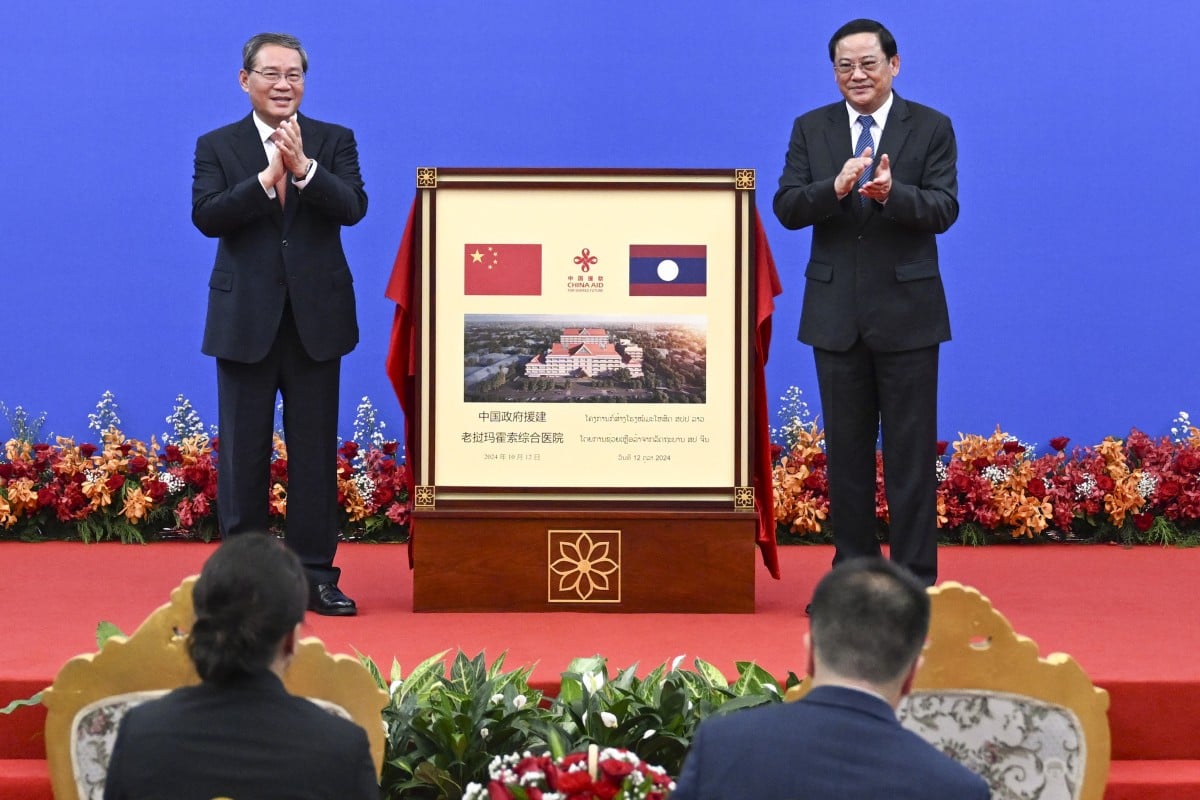China aims to scale up infrastructure construction in uniquely strategic Laos to accelerate trade and investment throughout Southeast Asia as Chinese businesses scout for space to grow offshore, analysts said.
Premier Li Qiang said during a four-day visit to the Southeast Asian nation earlier this month that he would work with Laotian officials to turn Laos from landlocked to “land-linked”, according to the Ministry of Foreign Affairs.
Laos, relatively undeveloped and small at just 7.4 million people, matters to Beijing because it shares borders not only with China, but also with the larger Southeast Asian economies of Cambodia, Myanmar, Thailand and Vietnam.
“Laos is seen as a transport hub for China to export Chinese products to the other countries in the subregion and import products from those countries to China,” said Supitcha Punya, an assistant professor of political science and public administration with Chiang Mai University in Thailand.
China would eventually add roads, airports and dry ports tethered to a 400km (249 mile), US$5.9 billion railway that was finished in 2021, the Asean+3 Macroeconomic Research Office (Amro) in Singapore said in January last year.
The additions would boost China’s economic reach in Southeast Asia for its own landlocked western regions, said Naubahar Sharif, head of public policy at the Hong Kong University of Science and Technology.
The 10-member Association of Southeast Asian Nations (Asean) bloc has a combined population of about 673 million, including several manufacturing hubs and some of the world’s fastest growing economies.
Laos is the only Asean nation with a direct railway route from its capital, Vientiane, to China, Sharif added.
A Bangkok-Nong Khai high-speed railway in Thailand is expected to link with the tracks in Laos to make it a “transit point”, giving China access to the Gulf of Thailand, also known as the Gulf of Siam, while also offering a “boost for seaborne trade”, Sharif said.
China is building much of the Thai railway and will help operate it. This month, China and Laos signed a joint statement aimed at improving a “connectivity development corridor” between the two countries and Thailand, according to the official Lao News Agency.
In February, Laos opened its third-largest airport, Bokeo International, which took funding from a Chinese developer.
China could use Laos to transport goods or people into Cambodia, where Chinese have invested heavily in property, analysts said.
In neighbouring Vietnam, a prime destination for Chinese manufacturers keen to sidestep the US-China trade war, officials have approved a high-speed rail project to be synced with tracks in China.
China particularly values the potential for agriculture, energy and tourism in Laos, Punya said.
Laotians, meanwhile, see China as a means to economic growth and job opportunities, the assistant professor said.


